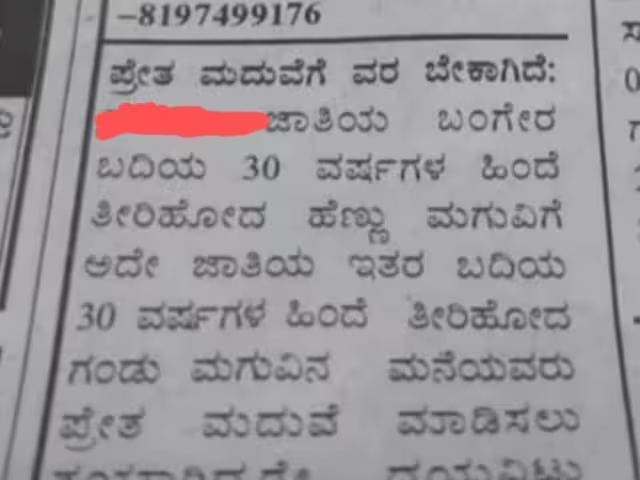The RRTS corridor would eliminate 55 minutes of travel time between Delhi and Meerut. Puri
Once fully operational, the Delhi-Ghaziabad-Meerut Regional Rapid Transit System (RRTS) Corridor will reduce the current three-hour drive time between Delhi and Meerut to roughly 50-55 minutes, according to Union Minister of Petroleum & Natural Gas and Housing & Urban Affairs Hardeep Singh Puri.
According to Puri, who was speaking with media, the corridor is one of the high-speed connections connecting cities.
“Under typical traffic circumstances, it takes three hours to go from Delhi to Meerut. When this Corridor is completed, it will take 50–55 minutes to travel the distance. This is a pretty significant development, he remarked.
“India will have the second-largest operating metro system for urban transportation in the world, larger than the United States. And as the economy expands, you’d discover that urban space, investments in urban space, facilities, and amenities for our inhabitants all develop and rise along with the expansion of the GDP, according to Puri.
Prime Minister Narendra Modi flagged off the first Namo Bharat train earlier in the day at Sahibabad RapidX Station in Ghaziabad, Uttar Pradesh, on a 17-km section of the Delhi-Meerut Regional Rapid Transit System (RRTS).
The Regional Rapid Transit System (RRTS) in India officially began when Modi signaled the departure of the Namo Bharat RapidX train that runs between Sahibabad and Duhai Depot. At the time, Puri said that the RRTS trains will be referred to as “Namo Bharat.”
The PM traveled on board the Regional Rapid Train “Namo Bharat” with other passengers who recounted their experiences, as well as how they believed the train service will be beneficial.
‘Duhai Depot’ will be connected to Sahibabad by the 17-km priority part of the Delhi-Ghaziabad-Meerut RRTS corridor, which Modi officially opened. Along the route, there will be stops at Ghaziabad, Guldhar, and Duhai. On March 8, 2019, Modi laid the cornerstone for the Delhi-Ghaziabad-Meerut corridor.
On Saturday, October 21, the priority section between Sahibabad and Duhai Depot will be open for passenger operations. By June 2025, the whole route is anticipated to be operational.
Modi introduced India’s first Regional Rapid Transit System (RRTS), which focuses on multi-nodal connection and includes a number of special features for the convenience of passengers.
These fully air-conditioned trains will operate at a speed of 160 kph and include a variety of commuter-friendly amenities for a secure and comfortable regional commute, such as ergonomic 22 transverse seating, wide standing space, luggage racks, CCTV cameras, laptop/mobile charging facilities, dynamic route maps, auto control ambient lighting system, Heating Ventilation and Air Conditioning System (HVAC), and other amenities.
Train service will be available from 6 am to 11 pm.
A train will be accessible every 15 minutes to start, with the system having the option to increase frequency based on demand.
The National Capital Region Transport Corporation (NCRTC) reports that the cost of a ticket for the priority section between Sahibabad and Duhai Depot is Rs. 50 for Standard Class and Rs. 100 for Premium Class.
A total of 1,700 passengers may fit in the six carriages of each train, which include both sitting and standing room. Each normal coach has 72 seats, while the premium coach has 62 seats.
Every train has a coach designated only for ladies; it’s the one right next to the first-class carriage. Additionally, special needs passengers and elderly passengers have seats designated in the other coaches.
One “premium coach” every train will provide a variety of extra commuter-friendly amenities including reclining seats, coat hooks, magazine holders, and footrests. The premium coach will be the first coach to depart from Delhi bound for Meerut and the last coach to depart from Meerut bound for Delhi.
Only a premium lounge built at platform level will provide access to the premium carriage. According to the spokeswoman, it will include cushioned chairs and a vending machine where passengers may purchase food and beverages.
An attendant will be assigned to each train who will play a crucial role in familiarizing the passengers with the amenities offered on the train and guaranteeing their safe and secure trip. The attendant will be positioned in the first-class carriage and will help any passengers who need it.
The National Common Mobility Card (NCMC) Card, a paper QR code-based travel ticket, ticket vending machines, and the NCRTC mobile application, “RAPIDX Connect,” are all accessible ticketing choices for commuters.
The final carriage of the train features a separate area for wheelchairs and stretchers to provide easy transportation on the RAPIDX trains.
“The guiding idea of the RRTS project being carried out by NCRTC is multi-modal integration. According to the spokeswoman, RRTS stations have been deliberately designed to allow for construction as near as feasible to the current forms of public transportation.
Three RRTS corridors, including the Delhi-Ghaziabad-Meerut, Delhi-Gurugram-SNB-Alwar, and Delhi-Panipat corridors, have been prioritized for Phase-I implementation out of the eight RRTS routes that have been selected for development in the NCR.
More than Rs 30,000 crore will be spent on the Delhi-Ghaziabad-Meerut RRTS, which would link Delhi and Meerut in less than an hour by passing via the cities of Ghaziabad, Muradnagar, and Modinagar.
The RRTS network will include substantial multi-modal integration with railway stations, metro stations, and bus services in accordance with the PM GatiShakti National Master Plan. These game-changing regional transportation options will increase regional economic activity, enhance access to job, educational, and healthcare opportunities, and significantly reduce traffic congestion and air pollution.







